Goutham Ramakrishnan
Towards Robustness to Label Noise in Text Classification via Noise Modeling
Jan 27, 2021



Abstract:Large datasets in NLP suffer from noisy labels, due to erroneous automatic and human annotation procedures. We study the problem of text classification with label noise, and aim to capture this noise through an auxiliary noise model over the classifier. We first assign a probability score to each training sample of having a noisy label, through a beta mixture model fitted on the losses at an early epoch of training. Then, we use this score to selectively guide the learning of the noise model and classifier. Our empirical evaluation on two text classification tasks shows that our approach can improve over the baseline accuracy, and prevent over-fitting to the noise.
Backdoors in Neural Models of Source Code
Jun 11, 2020



Abstract:Deep neural networks are vulnerable to a range of adversaries. A particularly pernicious class of vulnerabilities are backdoors, where model predictions diverge in the presence of subtle triggers in inputs. An attacker can implant a backdoor by poisoning the training data to yield a desired target prediction on triggered inputs. We study backdoors in the context of deep-learning for source code. (1) We define a range of backdoor classes for source-code tasks and show how to poison a dataset to install such backdoors. (2) We adapt and improve recent algorithms from robust statistics for our setting, showing that backdoors leave a spectral signature in the learned representation of source code, thus enabling detection of poisoned data. (3) We conduct a thorough evaluation on different architectures and languages, showing the ease of injecting backdoors and our ability to eliminate them.
Advances in Quantum Deep Learning: An Overview
May 08, 2020



Abstract:The last few decades have seen significant breakthroughs in the fields of deep learning and quantum computing. Research at the junction of the two fields has garnered an increasing amount of interest, which has led to the development of quantum deep learning and quantum-inspired deep learning techniques in recent times. In this work, we present an overview of advances in the intersection of quantum computing and deep learning by discussing the technical contributions, strengths and similarities of various research works in this domain. To this end, we review and summarise the different schemes proposed to model quantum neural networks (QNNs) and other variants like quantum convolutional networks (QCNNs). We also briefly describe the recent progress in quantum inspired classic deep learning algorithms and their applications to natural language processing.
BAE: BERT-based Adversarial Examples for Text Classification
Apr 04, 2020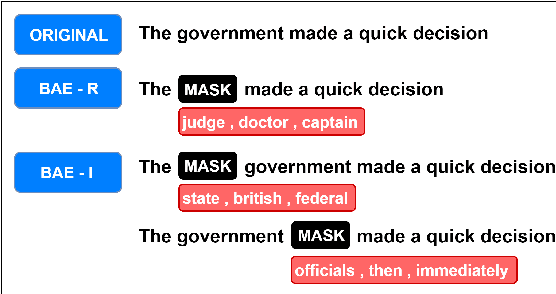
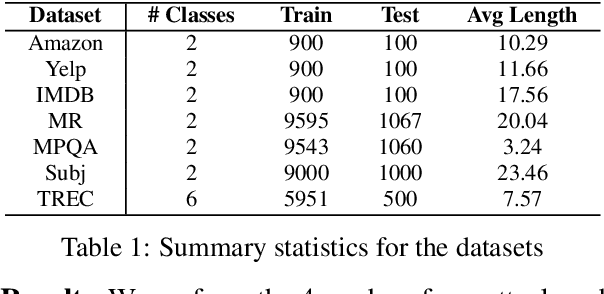
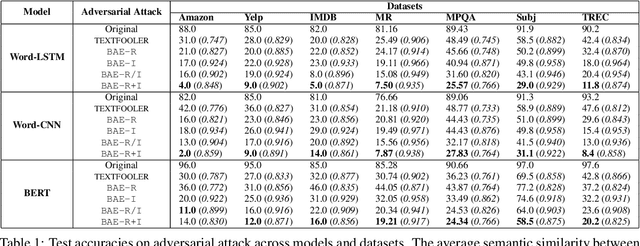
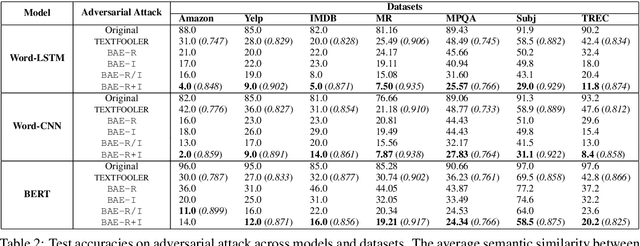
Abstract:Modern text classification models are susceptible to adversarial examples, perturbed versions of the original text indiscernible by humans but which get misclassified by the model. We present BAE, a powerful black box attack for generating grammatically correct and semantically coherent adversarial examples. BAE replaces and inserts tokens in the original text by masking a portion of the text and leveraging a language model to generate alternatives for the masked tokens. Compared to prior work, we show that BAE performs a stronger attack on three widely used models for seven text classification datasets.
Semantic Robustness of Models of Source Code
Feb 07, 2020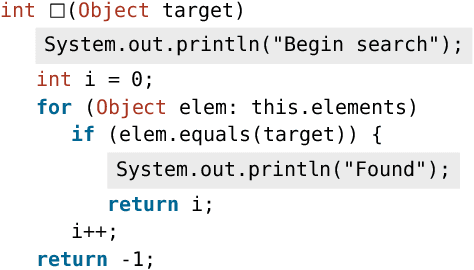
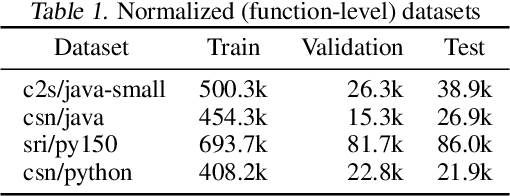
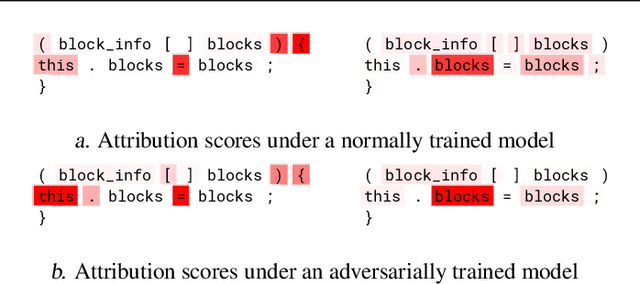
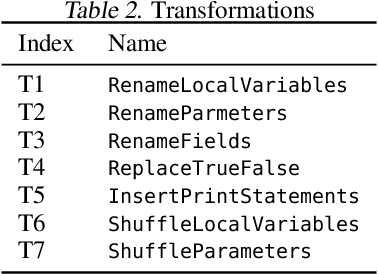
Abstract:Deep neural networks are vulnerable to adversarial examples - small input perturbations that result in incorrect predictions. We study this problem in the context of models of source code, where we want the network to be robust to source-code modifications that preserve code functionality. We define a natural notion of robustness, $k$-transformation robustness, in which an adversary performs up to $k$ semantics-preserving transformations to an input program. We show how to train robust models using an adversarial training objective inspired by that of Madry et al. (2018) for continuous domains. We implement an extensible framework for adversarial training over source code, and conduct a thorough evaluation on a number of datasets and two different architectures. Our results show (1) the increase in robustness following adversarial training, (2) the ability of training on weak adversaries to provide robustness to attacks by stronger adversaries, and (3) the shift in attribution focus of adversarially trained models towards semantic vs. syntactic features.
Synthesizing Action Sequences for Modifying Model Decisions
Oct 09, 2019



Abstract:When a model makes a consequential decision, e.g., denying someone a loan, it needs to additionally generate actionable, realistic feedback on what the person can do to favorably change the decision. We cast this problem through the lens of program synthesis, in which our goal is to synthesize an optimal (realistically cheapest or simplest) sequence of actions that if a person executes successfully can change their classification. We present a novel and general approach that combines search-based program synthesis and test-time adversarial attacks to construct action sequences over a domain-specific set of actions. We demonstrate the effectiveness of our approach on a number of deep neural networks.
Fast GPU-Enabled Color Normalization for Digital Pathology
Jan 10, 2019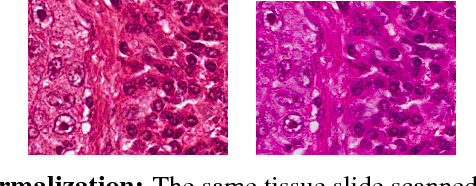
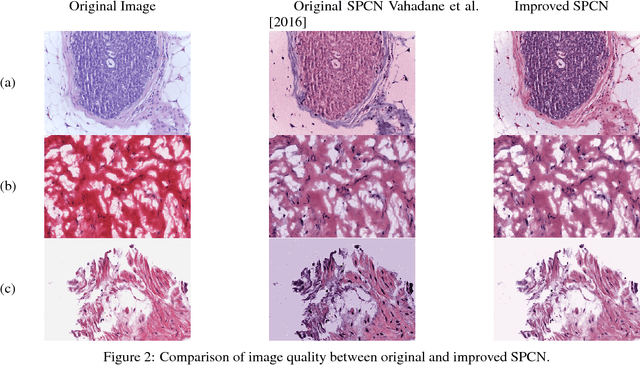

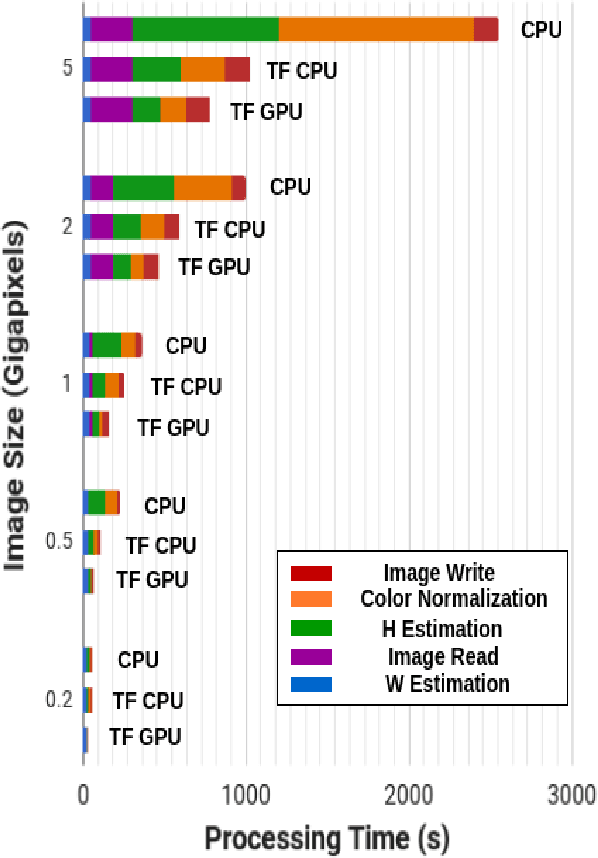
Abstract:Normalizing unwanted color variations due to differences in staining processes and scanner responses has been shown to aid machine learning in computational pathology. Of the several popular techniques for color normalization, structure preserving color normalization (SPCN) is well-motivated, convincingly tested, and published with its code base. However, SPCN makes occasional errors in color basis estimation leading to artifacts such as swapping the color basis vectors between stains or giving a colored tinge to the background with no tissue. We made several algorithmic improvements to remove these artifacts. Additionally, the original SPCN code is not readily usable on gigapixel whole slide images (WSIs) due to long run times, use of proprietary software platform and libraries, and its inability to automatically handle WSIs. We completely rewrote the software such that it can automatically handle images of any size in popular WSI formats. Our software utilizes GPU-acceleration and open-source libraries that are becoming ubiquitous with the advent of deep learning. We also made several other small improvements and achieved a multifold overall speedup on gigapixel images. Our algorithm and software is usable right out-of-the-box by the computational pathology community.
 Add to Chrome
Add to Chrome Add to Firefox
Add to Firefox Add to Edge
Add to Edge